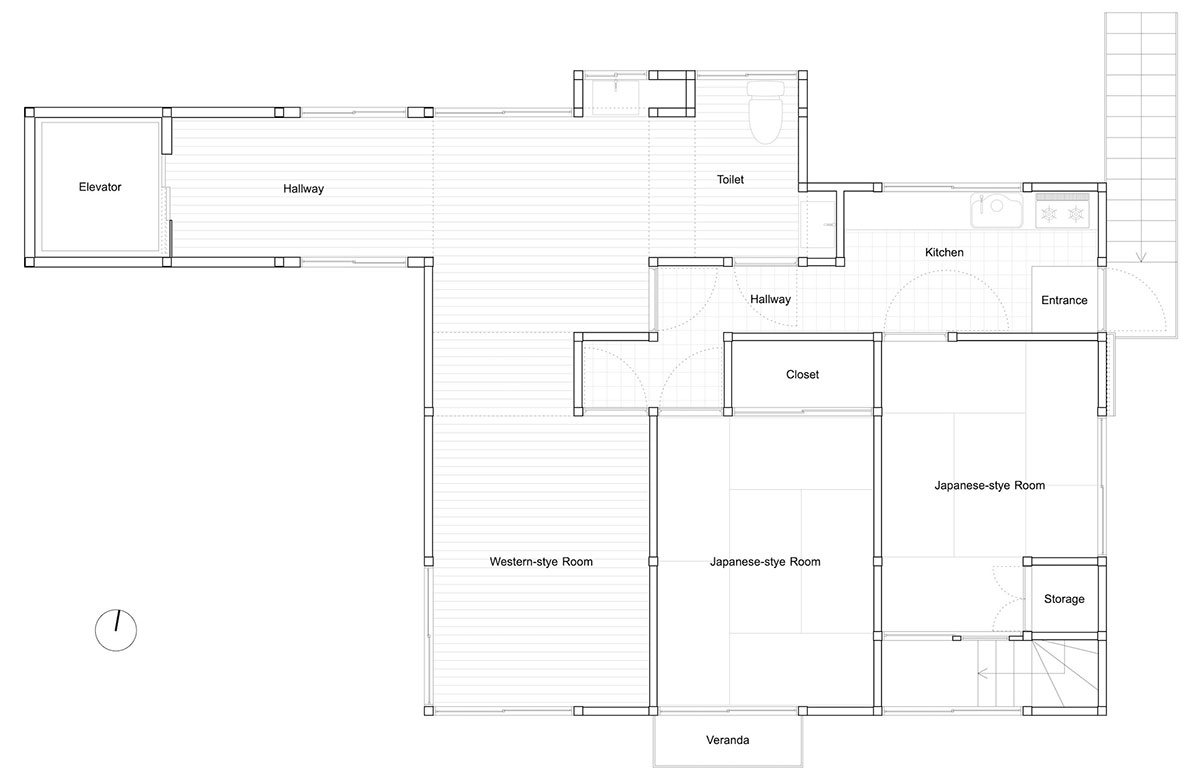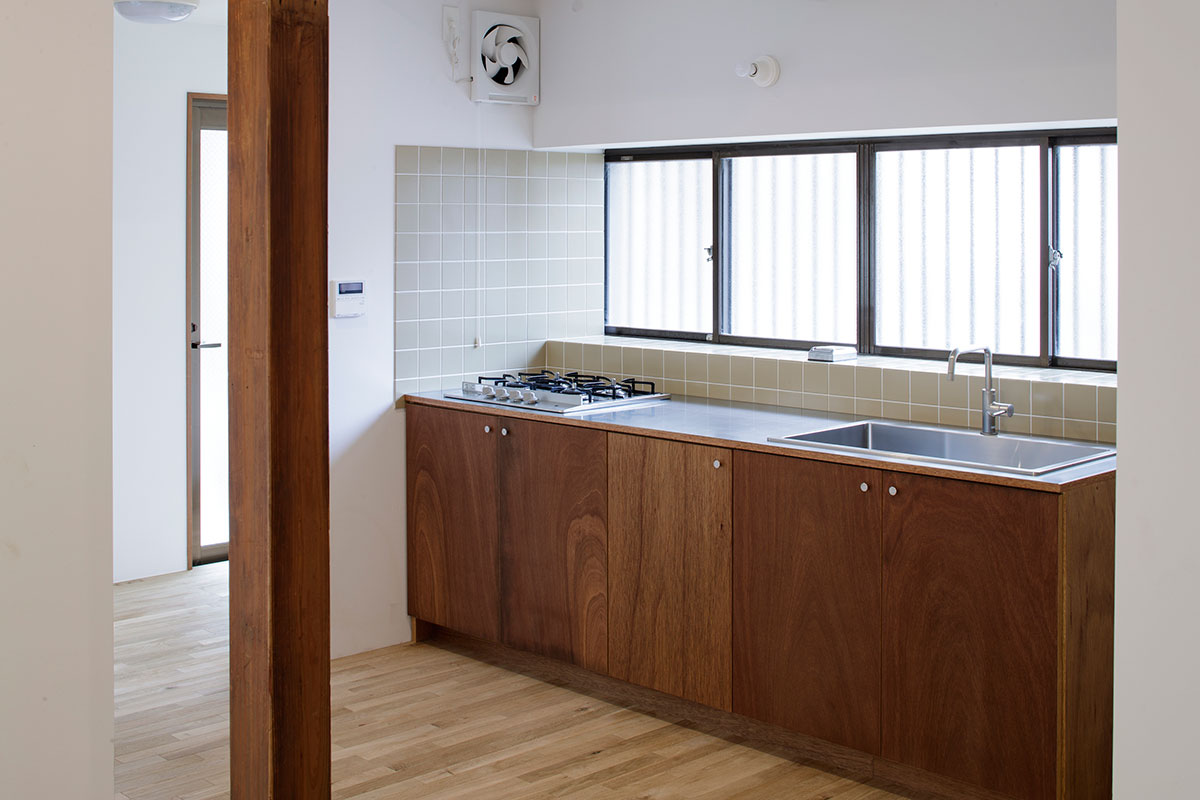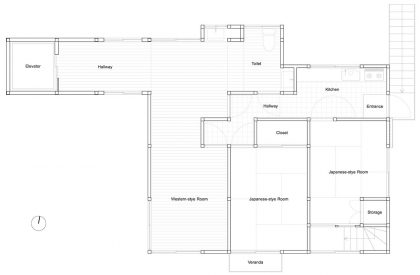Excerpt: Eifukucho House by Roovice is a renovation project with the aim to preserve the original structure while adapting it to modern living needs. The main goal was to allow in more light and air and confer more versatility to the space. To achieve this, the dividing walls of two of the Japanese-style rooms and the adjacent hallway were dismantled, leaving only the wooden columns exposed to create one big living-dining area connected to the kitchen zone.
Project Description

[Text as submitted by architect] The Eifukuchō house renovation is part of Roovice’s Kariage initiative: At zero cost for the owner the designers renovate and then sublease old vacant houses. The project started as a reaction to Japan’s continuing akiya (空き家) problem, as there are more than 10 million abandoned properties in Japan.


This Japanese house, typical for its period, was built around 70 years ago and is located in a quiet residential area called Eifukuchō, just a few stops from Shibuya, in Tokyo. Although situated in a densely populated neighborhood, it boasts a garden and a parking lot.



Originally, the ground floor was the owner’s private residence, while the second floor was used as a student dormitory with shared common spaces. Later, when the owner could not run the business anymore, the upper floor was redesigned to facilitate usage for an elderly person and an elevator was added. The house lay vacant for years, but luckily was well maintained.



The house featured many traditional Japanese elements such as shōji (sliding door made of a latticed screen covered with white paper), tatami floors and a doma (a stone paved entrance). Without a client to accommodate, the designers had the luxury of freedom to restore the property. The aim of this renovation was to preserve as much as possible while adjusting the space for the needs of modern life.



Given the generous dimensions of the house and the intended use of it as a rental property, the first decision taken was to separate the two floors into independent units. In order to offer the option of connecting the spaces once more in future, the designers hid the internal staircase behind a wall. They left the last two steps of it exposed in the living room of the first floor, repurposing them as a bench, a shelf or simply to add aesthetic appeal.



The house already had a staircase on the exterior that could be used to directly access the second floor, so refurbishing it with new paint was sufficient. The elevator was removed and turned into a storage space. As in most Japanese houses, the initial setup was very fragmented, dividing the space into many smaller areas.


The designers did not conduct any major alterations to the first-floor plan. The main goal was to allow in more light and air and confer more versatility to the space. To achieve this, they dismantled the dividing walls of two of the Japanese-style rooms and the adjacent hallway, leaving only the wooden columns exposed to create one big living-dining area connected to the kitchen zone. The existing storage space in the former hallway has been given a fresh, neat look by adding dark wooden doors to match the colour of the wood of the columns and the new kitchen counter.


The designers reformed the second floor by following the same philosophy, dismantling the walls of one of the former Japanese-style rooms into a new open space with a kitchen corner, relocated from the entrance area. They removed the ceiling boards and painted the resulting exposed wooden columns white, to grant the area a feeling of spaciousness.
A bedroom now sits in the area of the former second Japanese-style room. They retained the shōji window, opening on the south side of the room, to let more daylight in from the corridor facing the garden.



Both of the apartments have been furnished with new custom-made dark Lauan wood kitchen counters, framed with 10x10cm tiles recalling the Shōwa (Japanese modern) era, to match the atmosphere of the rest of the house. To stress the continuity between traditional and modern, small accents, such as light switches, have been preserved.


Floors in the kitchen and living area of the first floor and in all rooms of the second floor were replaced with a more practical light oak wooden flooring. On the first floor the designers preserved one traditional Japanese style room with tatami.
































